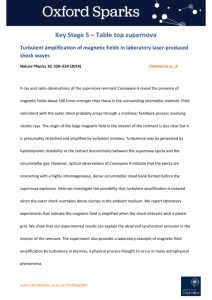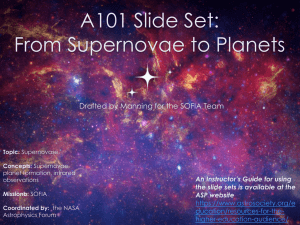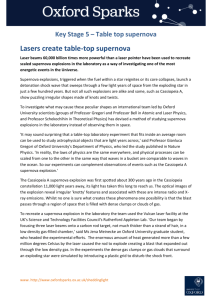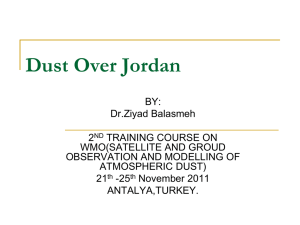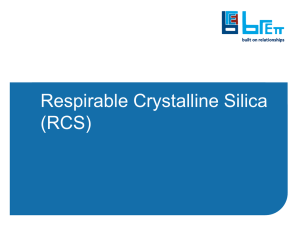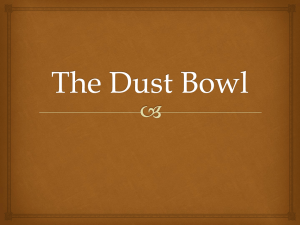Powerpoint
advertisement
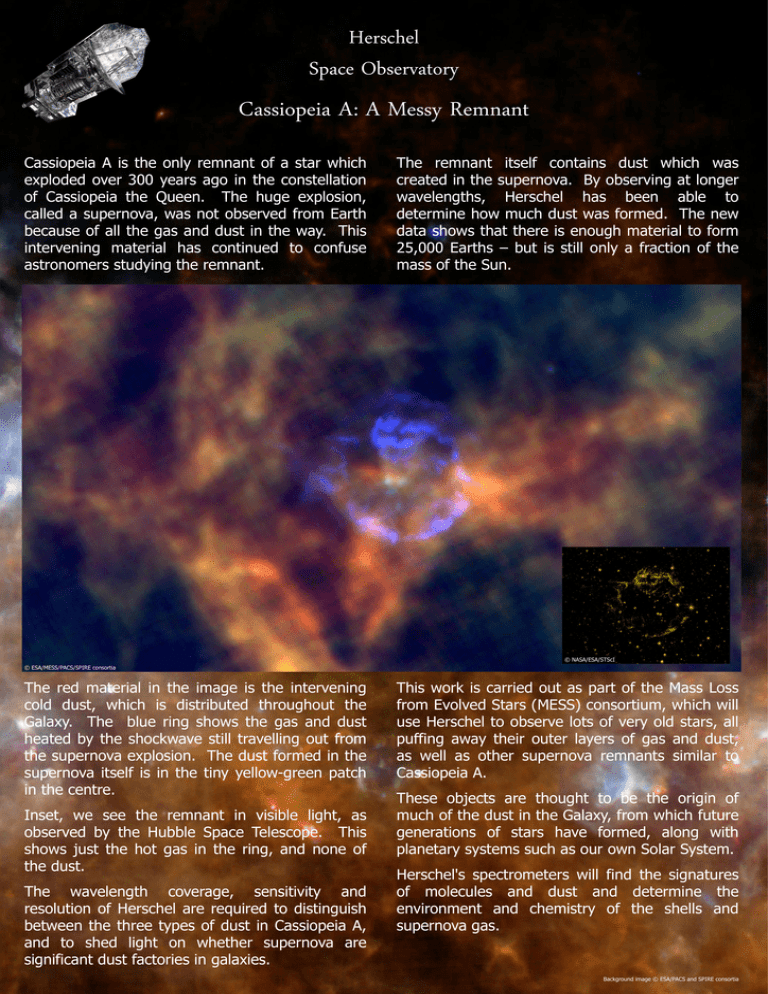
Herschel Space Observatory Cassiopeia A: A Messy Remnant Cassiopeia A is the only remnant of a star which exploded over 300 years ago in the constellation of Cassiopeia the Queen. The huge explosion, called a supernova, was not observed from Earth because of all the gas and dust in the way. This intervening material has continued to confuse astronomers studying the remnant. The remnant itself contains dust which was created in the supernova. By observing at longer wavelengths, Herschel has been able to determine how much dust was formed. The new data shows that there is enough material to form 25,000 Earths – but is still only a fraction of the mass of the Sun. © NASA/ESA/STScI © ESA/MESS/PACS/SPIRE consortia The red material in the image is the intervening cold dust, which is distributed throughout the Galaxy. The blue ring shows the gas and dust heated by the shockwave still travelling out from the supernova explosion. The dust formed in the supernova itself is in the tiny yellow-green patch in the centre. Inset, we see the remnant in visible light, as observed by the Hubble Space Telescope. This shows just the hot gas in the ring, and none of the dust. The wavelength coverage, sensitivity and resolution of Herschel are required to distinguish between the three types of dust in Cassiopeia A, and to shed light on whether supernova are significant dust factories in galaxies. This work is carried out as part of the Mass Loss from Evolved Stars (MESS) consortium, which will use Herschel to observe lots of very old stars, all puffing away their outer layers of gas and dust, as well as other supernova remnants similar to Cassiopeia A. These objects are thought to be the origin of much of the dust in the Galaxy, from which future generations of stars have formed, along with planetary systems such as our own Solar System. Herschel's spectrometers will find the signatures of molecules and dust and determine the environment and chemistry of the shells and supernova gas. Background image © ESA/PACS and SPIRE consortia

